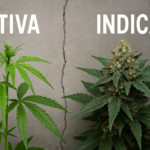In the digital age, certain search terms suddenly rise in popularity, often leaving people curious about what they mean and why they are trending. One of those terms is “clay cane torrent.” At first glance, it may seem like just another combination of a public figure’s name and the word “torrent,” but behind it lies a mix of online behavior, digital accessibility, and the culture of file sharing.
When people search for clay cane torrent, they are usually looking for free ways to access the works, interviews, or published content of Clay Cane, a respected journalist, author, and cultural commentator. Torrents, in general, have long been associated with downloading media outside of official platforms, but their role in today’s digital landscape is shifting.
This article explores what the term really means, why it attracts attention, the risks involved with torrents, and better ways to engage with Clay Cane’s work. It will also place the topic within the bigger conversation about how torrents affect media, journalism, and digital consumption.
What the Term “Clay Cane Torrent” Refers To
At its core, the phrase “clay cane torrent” is a combination of a person’s name and the idea of downloading through a peer-to-peer file-sharing network. Clay Cane is a well-known voice in journalism and culture, particularly around issues of race, identity, and social justice. The word “torrent,” however, shifts the conversation into the realm of digital downloads that are often unlicensed or unauthorized.
This phrase shows up in searches because many people are drawn to torrents as a way to access media without paying or subscribing to official channels. It doesn’t necessarily mean that torrents of Clay Cane’s work exist in large supply, but the association comes from broader online habits where users type the name of a creator followed by “torrent” in hopes of finding their work.
In essence, the relevance of this keyword lies not only in Clay Cane’s influence but also in the continuing role torrents play in how people look for media online.
The Appeal Behind Torrent Searches for Clay Cane
There are several reasons why users search for clay cane torrent. One is simple curiosity—many people are drawn to his sharp cultural analysis and want to access it without barriers. Others may live in regions where his books, interviews, or features are not easily available, making torrents seem like a shortcut to access material otherwise locked behind paywalls or regional restrictions.
Digital access has created a paradox: while more content is available than ever before, not everyone feels they can reach it fairly or affordably. This leads some audiences to seek out torrents in an attempt to bypass obstacles. For instance, an international reader who cannot find a local edition of a book might think of torrents as the easiest solution.
The driving force is less about malice and more about access. Still, this behavior carries consequences that extend beyond individual convenience, which is why it’s important to understand both the risks and the alternatives.
The Risks of Downloading Clay Cane Torrents
While torrents may feel like a fast way to access content, they come with significant dangers that are often underestimated.
The first risk is security. Torrent files are usually shared by anonymous users, and downloading them can expose your device to malware, spyware, or other harmful software. A single unsafe file can compromise personal data, leaving users vulnerable to identity theft or financial fraud.
The second risk is legal. Unauthorized downloads of copyrighted material are against the law in most countries. Even if someone believes they are acting harmlessly by downloading a single file, the act still falls into copyright infringement, which can lead to penalties or legal action.
The third risk is the effect on creators and industries. Clay Cane, like other journalists and authors, invests time and energy into his work. When people bypass legitimate avenues and use torrents instead, it undermines the ability of creators to sustain their work. Journalism, books, and media projects depend on audiences choosing legal and ethical forms of access.
These risks make it clear that while torrents may seem appealing in the short term, they create long-term harm for both consumers and creators.
Safer and Legitimate Ways to Access Clay Cane’s Work
The good news is that there are safe and ethical ways to engage with Clay Cane’s contributions. His work is available through official publishers, media platforms, and interviews accessible online. Choosing these legitimate channels ensures both security for the reader and fair recognition for the creator.
For example, his published books can be found through reputable booksellers and libraries. Many of his interviews, appearances, and writings are also available on official news websites and streaming platforms. These options not only support his work but also guarantee that the material is accurate and complete, unlike torrents that often circulate in incomplete or corrupted forms.
By choosing authentic sources, audiences benefit from higher quality experiences while also participating in a more sustainable media ecosystem. Supporting creators through official platforms helps guarantee that voices like Clay Cane’s remain active in the cultural and journalistic landscape.
The Bigger Picture: Torrent Culture and Media Consumption
The discussion about clay cane torrent is not only about one person or one search term—it reflects a larger trend in how audiences consume media today. Torrent culture, which began as a way to share large files quickly, has become a symbol of both freedom and risk.
On one hand, torrents highlight the desire for global access to information, stories, and entertainment. On the other, they expose the gaps in how content is distributed and monetized. Many people turn to torrents not out of rejection of creators, but because distribution models sometimes fail to reach all audiences.
The industry has responded by shifting toward safer streaming and publishing models. Subscription services, digital libraries, and wider international licensing have all grown in response to the demand that torrents once filled. Instead of chasing unauthorized downloads, audiences now have more choices to access media legally and conveniently.
By placing the term “clay cane torrent” into this bigger picture, we see it as part of an ongoing dialogue between creators, audiences, and technology.
Conclusion
The phrase clay cane torrent may appear simple, but it opens up a broader conversation about access, ethics, and the future of media consumption. It reflects both the curiosity around Clay Cane’s work and the habits of audiences who turn to torrents when they cannot find easier solutions.
However, torrents carry risks that cannot be ignored. From malware threats to legal consequences and harm to creators, they create problems that outweigh any short-term benefits. By contrast, legitimate platforms offer safer, more reliable, and more ethical ways to enjoy Clay Cane’s contributions.
In the end, engaging with Clay Cane’s work through proper channels is not just about personal safety—it is about respecting the effort of creators and contributing to a healthier media landscape. As torrent culture slowly gives way to more accessible legal platforms, the choice becomes clearer: supporting authentic sources is the most responsible path forward.
My name is Mustafa, and I have been blogging for over 5 years. I am passionate about sharing complete, accurate, and helpful information with my readers. Along with managing content on The Matcha Read, I also contribute blog posts to premium websites. My goal is to provide valuable insights in a clear and easy-to-understand way, so every reader walks away with useful knowledge.









